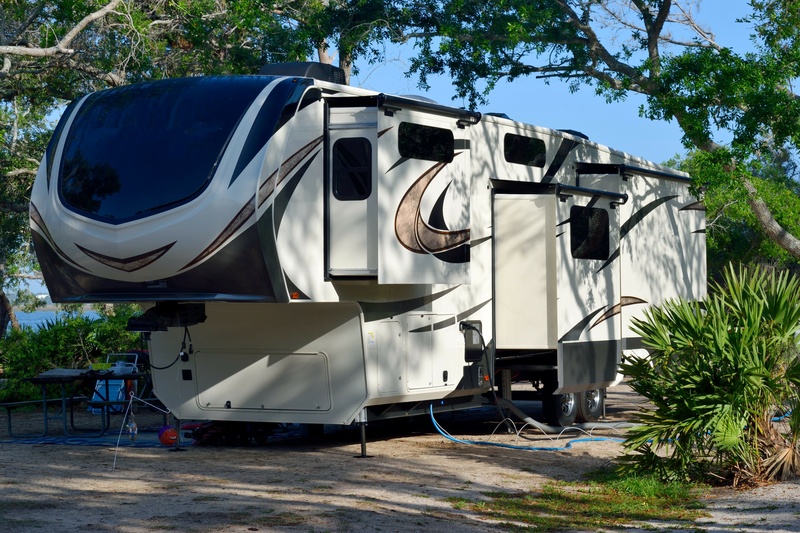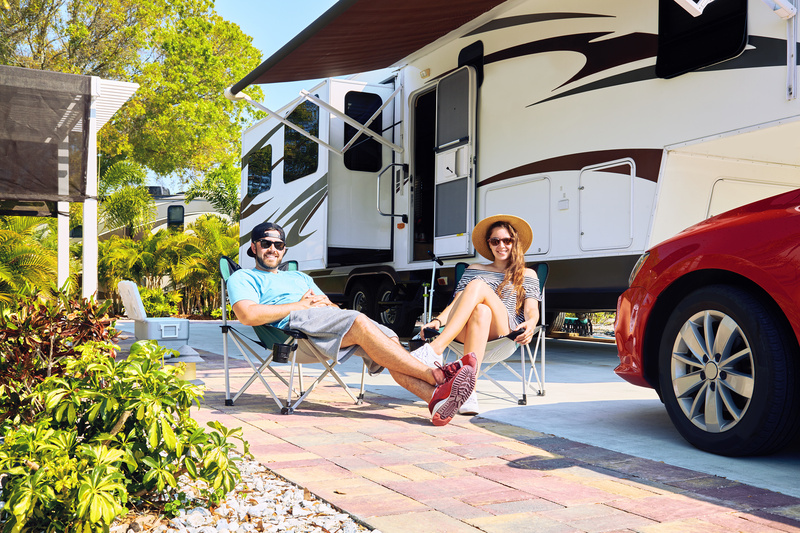RV Slide Out Care Guide
RV ownership can be plenty of fun, but it can also be a huge responsibility. The price tag that comes along with RV issues is often quite hefty. When your unit malfunctions, it can be difficult to spot what’s wrong without the help of a professional. The best way to avoid the headaches that come along with RV use is to focus on preventing issues before they occur.
RV slide out problems are one of the most common mechanical malfunctions in RVs. When your RV doesn’t slide out, there isn’t much you can do to save your camping trip. Although often problematic, RV slides are almost always necessary. Without their ability to create extra width inside your camper, your vacations would be pretty cramped. Slide out care is important, so we gathered some info on how they work, common problems, and how to keep them in good condition.

How Does an RV Slide Out Work?
An RV slide out has become an industry standard for almost every type of unit — motorized and towable. Since the late 90’s, most campers have included at least one slide to increase the livable space on the inside of your RV. There are different RV slide out types, but most use electric motors or hydraulics to operate.
Electric RV slide outs often use a rack and pinion system powered by an electric motor. The motor spins a shaft or pinion which moves the slide in one direction, and adding a gear allows it to slide in the opposite direction. The electric motor uses a 12-volt DC power, which runs directly off the main house battery. This makes them usable when you’re not plugged into a power source at the campground.
Though less common, some RV slide outs use pull-and-cable systems. Others use the well-known Schwintek slides. Finally, though very rare, a few units are equipped with the power gear slide out system. The rack and pinion, however, is by far the most common slide out system, so that’s what we’ll focus on.
Common RV Slide Out Problems
The top five reasons for a slide out malfunction are lubrication issues, motor burnout, power issues, foreign objects and leaks. Some are easily treatable on your own, but others will need professional attention from RV service technicians.

Lubrication Issues
Likely the most common root issue, a lack of proper lubrication results in your RV slide out struggling to smoothly move in and out. This is often an easy fix with a lubricating product like WD-40’s RVcare line, which we’ll discuss again later. Be careful not to force a slide that needs lubrication as you can damage the rail system and make the situation much worse.
Motor Burnout & Power Issues
Another common culprit, motor burnout occurs when the motor that moves the slide in and out stops functioning. Somewhat similarly, power issues occur when your RV slide out can’t pull power from your unit, or your RV isn’t properly connected to a power source. This isn’t as easy to fix on your own, so you’re better off scheduling an RV service appointment for professional help.

Other Issues
Finally, leaks and foreign objects will prevent your RV slide out from functioning properly. Anything that blocks the slides or interferes with their movement can cause slide out issues. It’s best to assess the situation and then decide if you need to call a professional. If you aren’t confident that you can repair the leak or remove the object, it’s probably best to find an RV technician. You may end up making the issue worse, which will only drive up the cost of a fix.
Manual RV Slide Out Overrides
If you’re stranded at a campground with a stuck slide out, consider manually moving the slide in or out. Your RV should come with an owner’s manual, which has more unit-specific instructions on manually moving a slide out.
First, find the slide out motor, often below the slide out room. Remove the brake assembly from the motor by unscrewing it. Find the crank extension and attach it to the crank handle that comes with the trailer. If you don’t have the crank handle, you can probably use a wrench or socket and ratchet. Turn the crank extension by hand to manually move the RV slide in or out.
After you’ve moved the RV slide out to the desired position, be sure to reattach the brake assembly to the slide out motor. Replace and tighten the screws to prevent the slide out from moving.
RV Slide Out Problem Prevention
Luckily for RVers, WD-40 has our backs with their 3-in-1 RVcare product line. WD-40’s RVcare Slide-Out Silicone Lube is perfect for preventing, and sometimes treating, slide out problems.
Simply spray the trusted brand of lubricant on the tracks and your slide out will be moving smoothly. WD-40 RVcare also makes Window and Track Dry Lube, which helps prevent messes and works well on RV window tracks, or other interior slides. Both products are a great way to lubricate your RV after long, stationary months in winter storage.

RV slide outs move with simple rack and pinion technology. Overall, troubleshooting and preventing RV slide out problems doesn’t have to be complicated. Follow our advice to keep your unit functioning well and save yourself a few headaches and canceled vacations. If you have no choice, you can always manually move your slide in or out
If you continue to have problems, or have questions on slide out care, bring your unit by Crossroads Trailers. Our friendly and experienced service staff can assess the issue and make the repairs that get you back on the road as soon as possible. If you’re ready to make a change, our sales staff would be happy to help you find new RVs for sale in NJ at our Newfield dealership. Stop by our New Jersey location, contact us online or give us a call today if you have any questions about our RV sales or service.
Ready for a New RV?
Start your search at Crossroads Trailer Sales in Newfield, New Jersey. You’ll find the best RV deals and the best customer service in the northeast at our dealership! We’ve been providing RV sales, parts and service for over 30 years. Get started by browsing our inventory online today!

